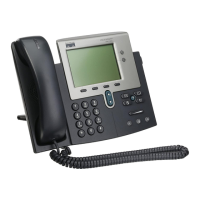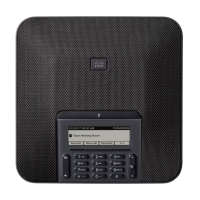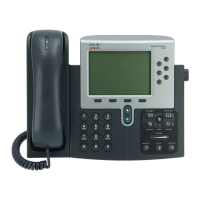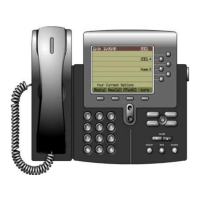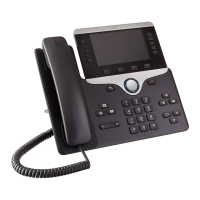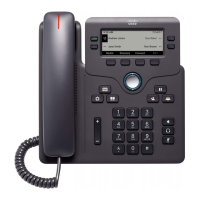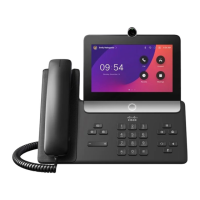2-11
Cisco Unified IP Phone 7906G and 7911G for Cisco Unified Communications Manager 6.0
OL11954-01
Chapter 2 Preparing to Install the Cisco Unified IP Phone on Your Network
Understanding the Phone Startup Process
7. Requesting the
Configuration File.
The TFTP server has configuration files, which
define parameters for connecting to
Cisco Unified Communications Manager and
other information for the phone.
See the “Understanding
Phone Configuration
Files” section on
page 2-7.
See the “Resolving
Startup Problems”
section on page 9-2.
8. Contacting
Cisco Unified
Communications
Manager.
The configuration file defines how the
Cisco Unified IP Phone communicates with
Cisco Unified Communications Manager and
provides a phone with its load ID. After obtaining
the file from the TFTP server, the phone attempts
to make a connection to the highest priority
Cisco Unified Communications Manager on the
list. If security is implemented, the phone makes a
TLS connection. Otherwise, it makes a non-secure
TCP connection.
If the phone was manually added to the database,
Cisco Unified Communications Manager
identifies the phone. If the phone was not
manually added to the database and
auto-registration is enabled in
Cisco Unified Communications Manager, the
phone attempts to auto-register itself in the
Cisco Unified Communications Manager
database.
Note Auto-registration is disabled when
security is enabled on
Cisco Unified Communications Manager.
In this case, the phone must be manually
added to the Cisco Unified
Communications Manager database.
See the “Resolving
Startup Problems”
section on page 9-2.
Table 2-3 Cisco Unified IP Phone Startup Process (continued)
Step Description Related Topics
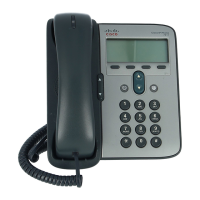
